Classical Theories of International Trade Lecture 4

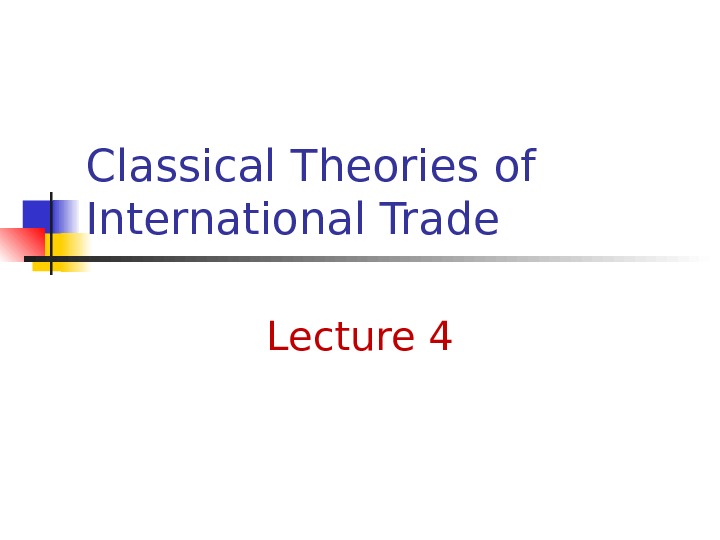

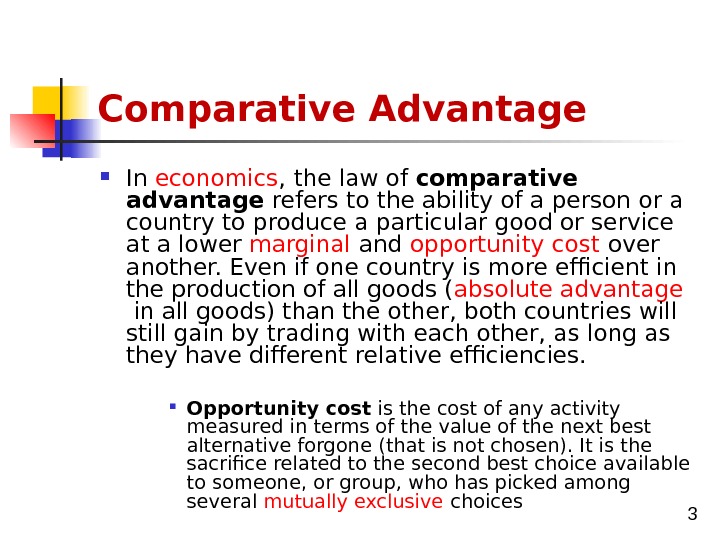
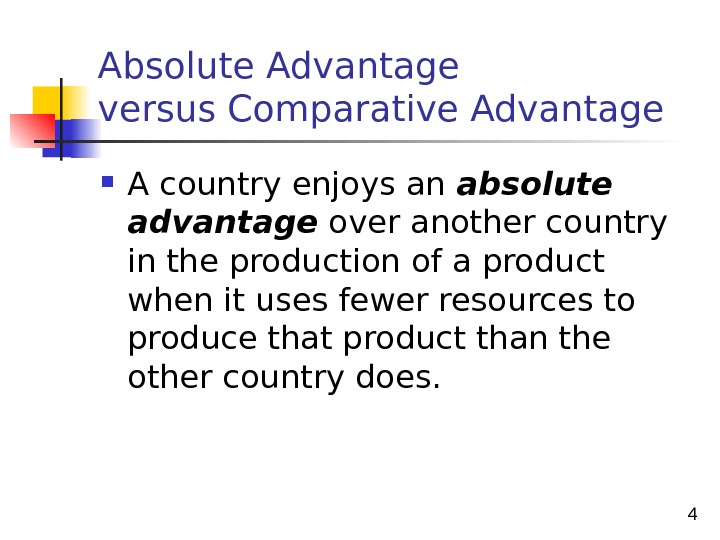
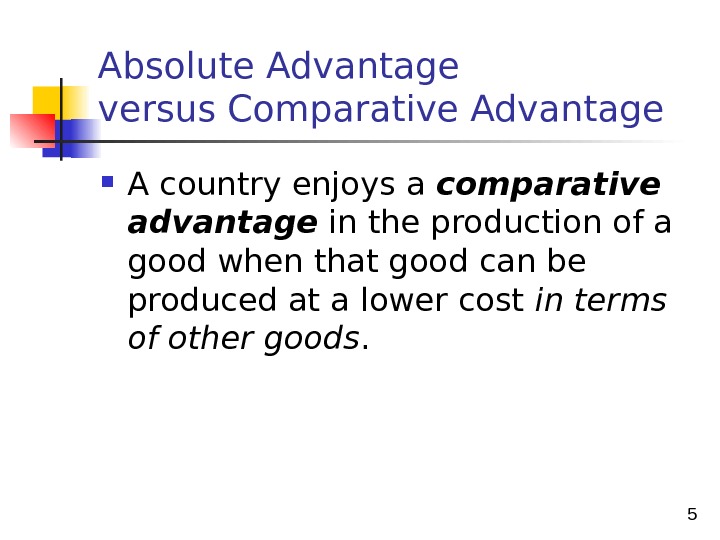
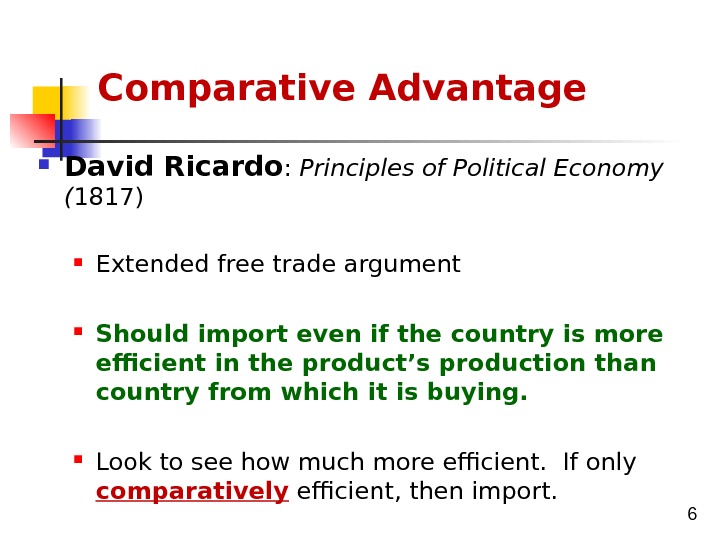

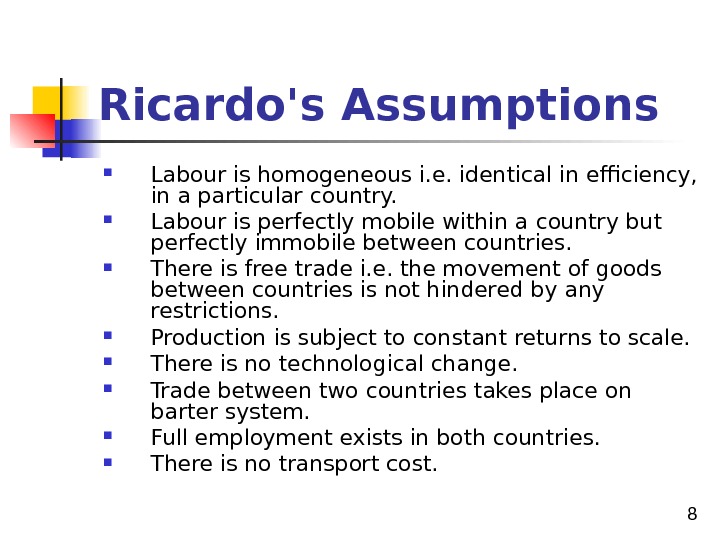
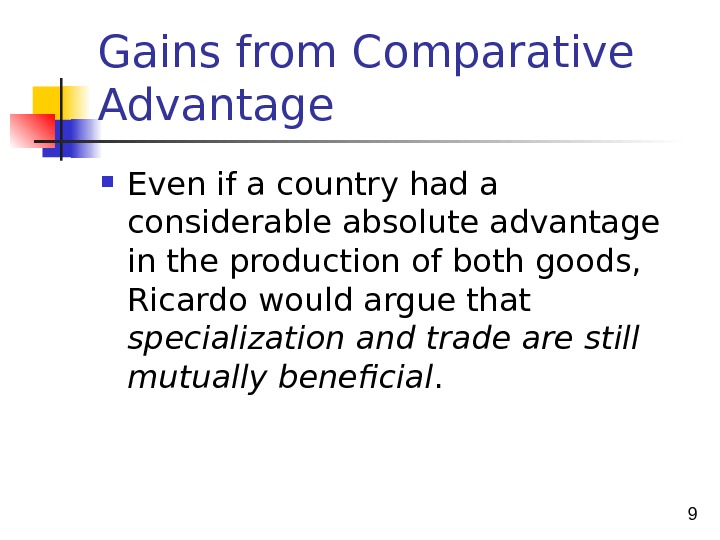
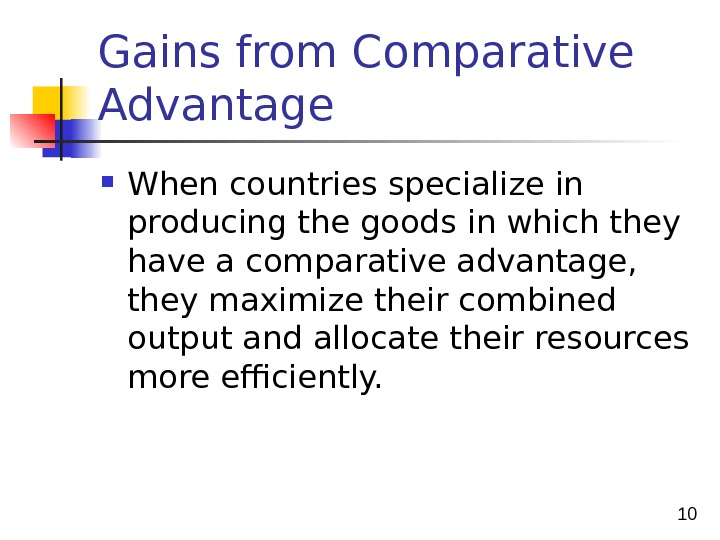
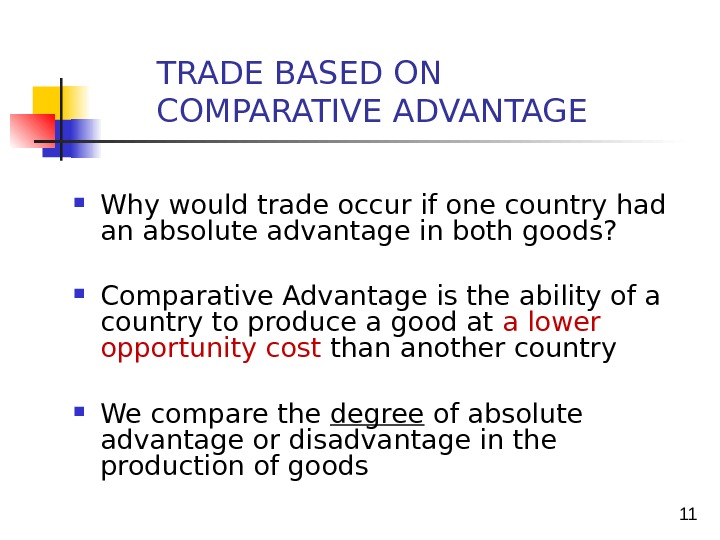
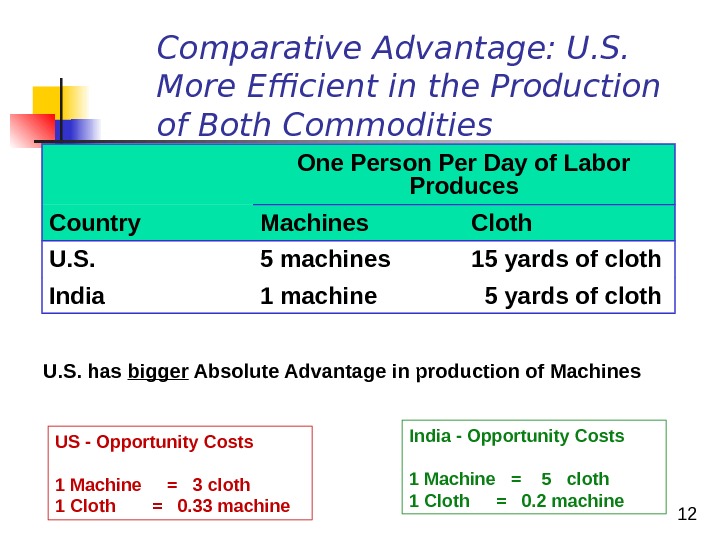
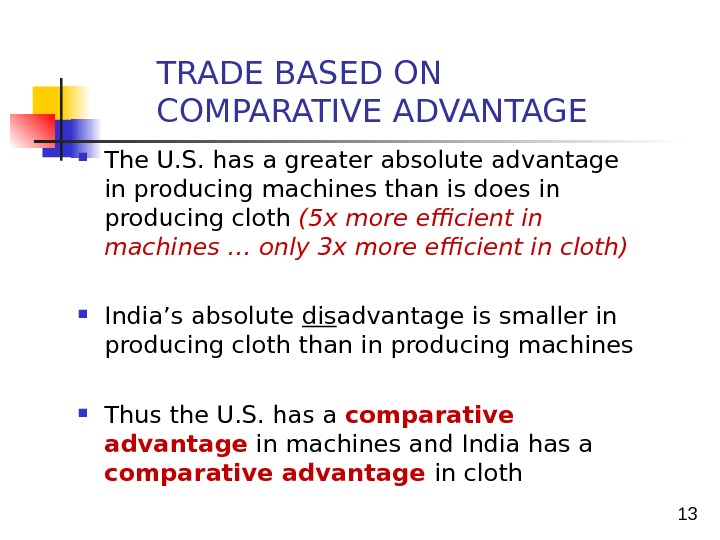
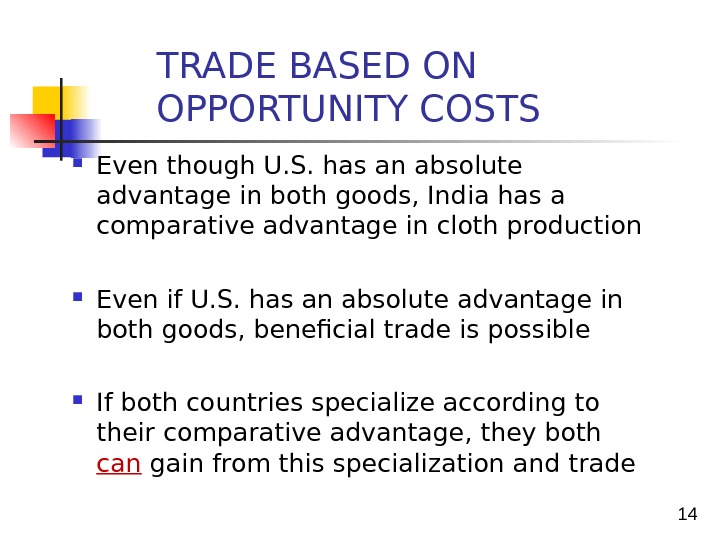
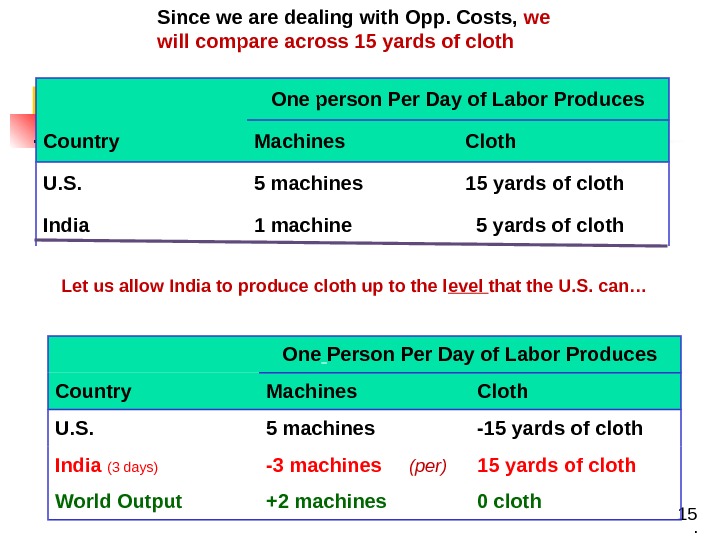
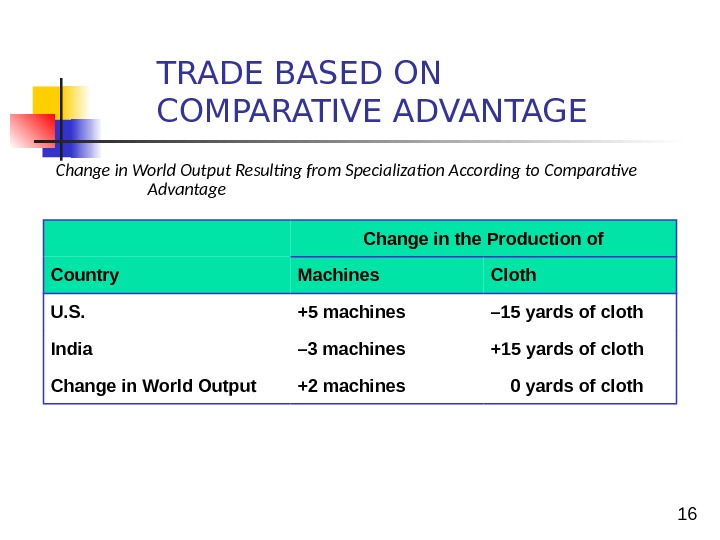
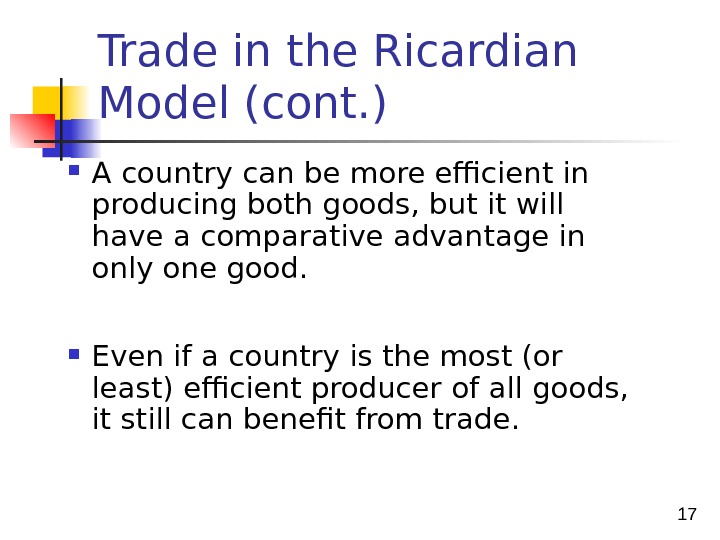
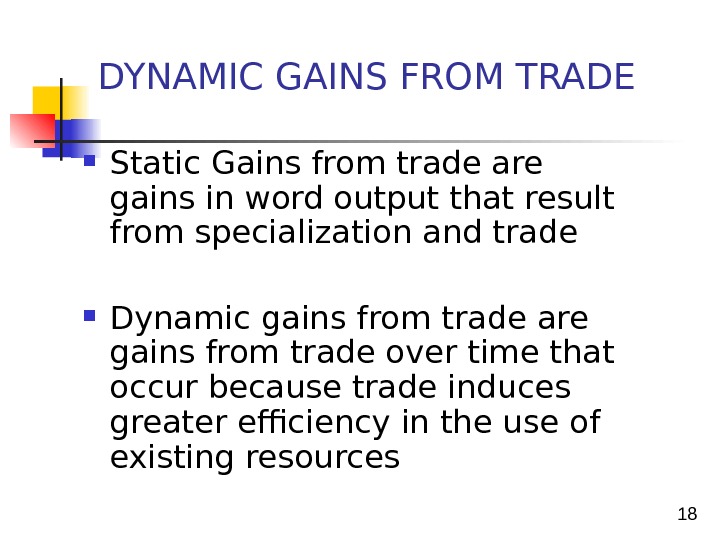
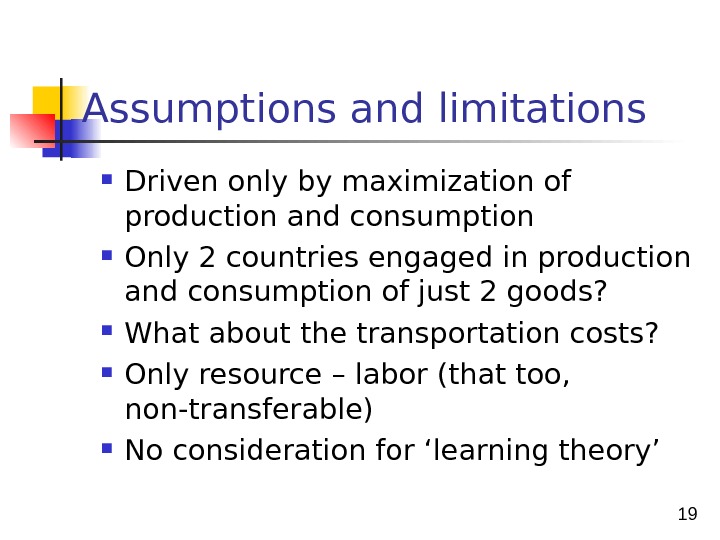
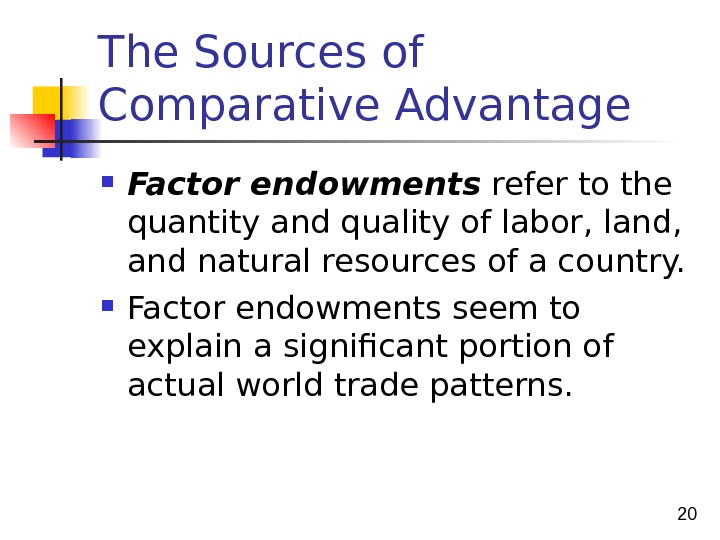
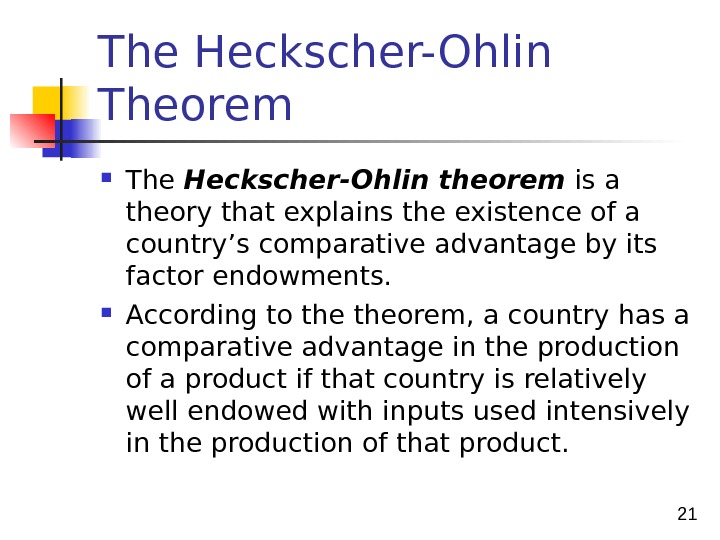
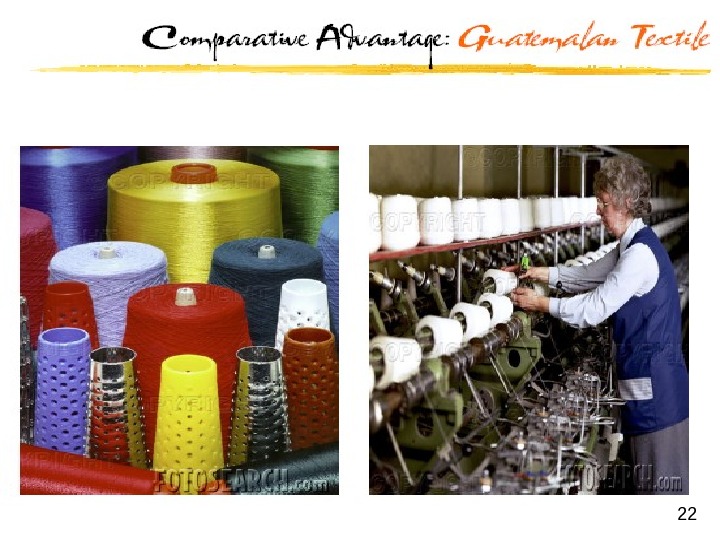

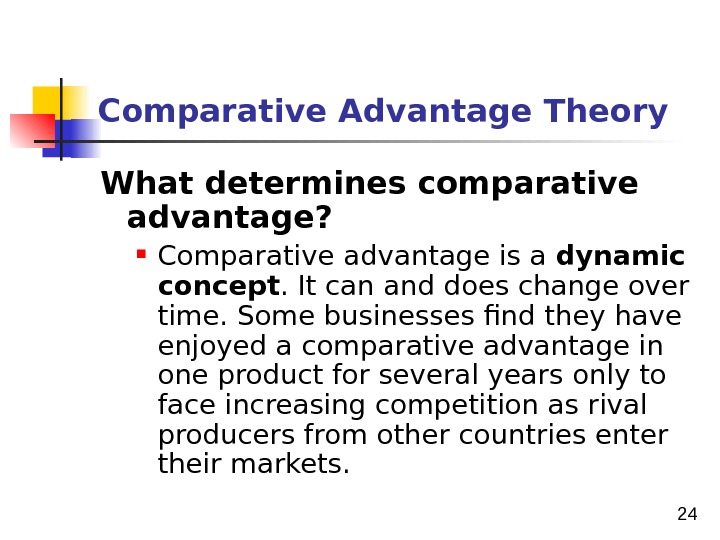
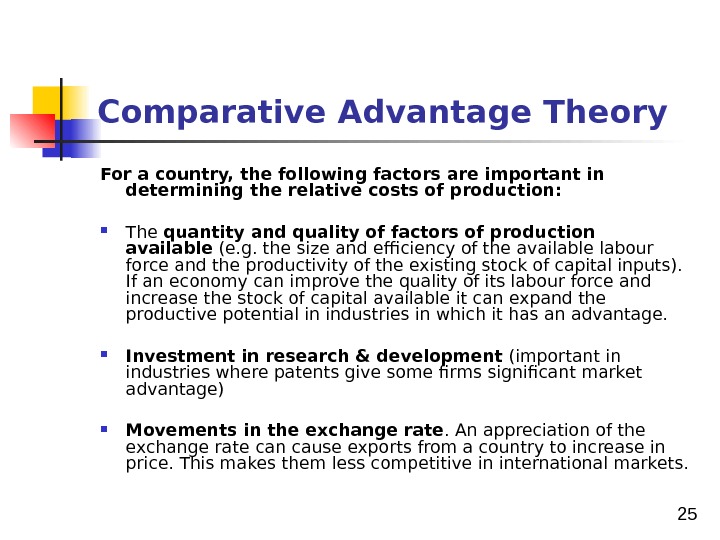
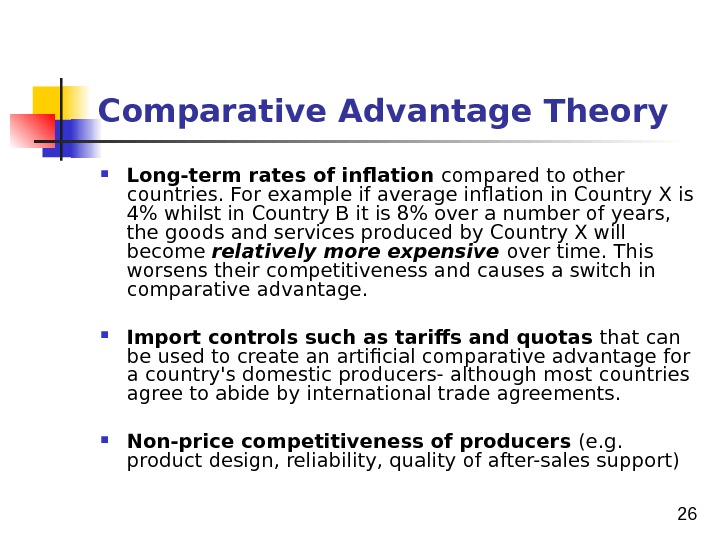
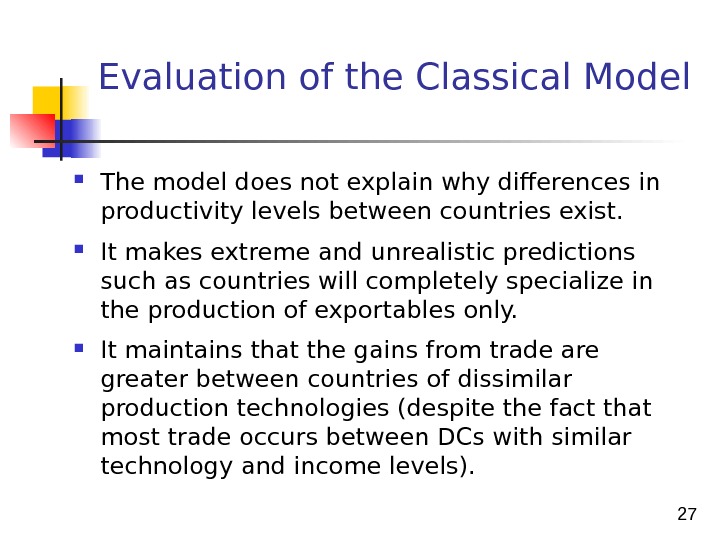
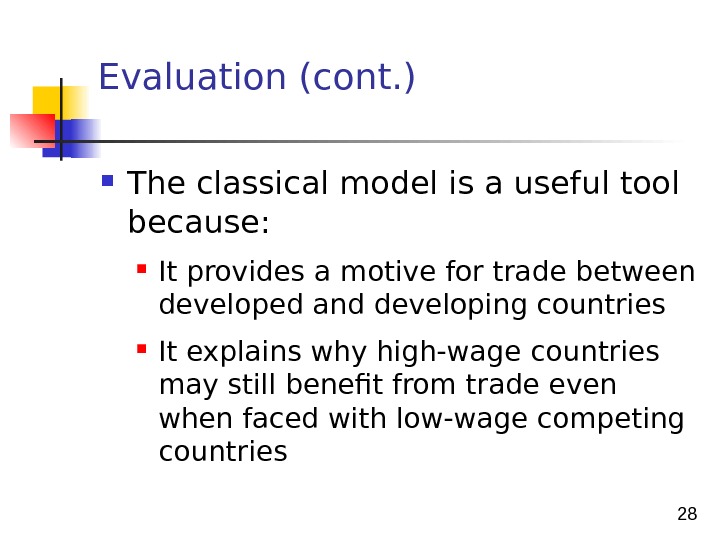
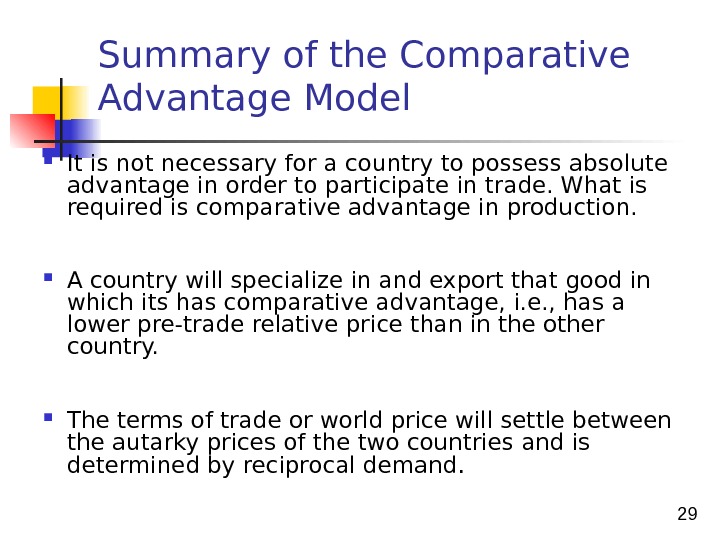
class_th_of_int_trade_-_lecture_4.ppt
- Размер: 870 Кб
- Количество слайдов: 29
Описание презентации Classical Theories of International Trade Lecture 4 по слайдам
 Classical Theories of International Trade Lecture
Classical Theories of International Trade Lecture
 2 Lecture 4 Evolution of Trade Theories • Mercantilism • Absolute Advantage • Comparative Advantage • Factor proportion Trade • International Product Cycle • New Trade Theory • National Competitive Advantage
2 Lecture 4 Evolution of Trade Theories • Mercantilism • Absolute Advantage • Comparative Advantage • Factor proportion Trade • International Product Cycle • New Trade Theory • National Competitive Advantage
 3 Comparative Advantage In economics , the law of comparative advantage refers to the ability of a person or a country to produce a particular good or service at a lower marginal and opportunity cost over another. Even if one country is more efficient in the production of all goods ( absolute advantage in all goods) than the other, both countries will still gain by trading with each other, as long as they have different relative efficiencies. Opportunity cost is the cost of any activity measured in terms of the value of the next best alternative forgone (that is not chosen). It is the sacrifice related to the second best choice available to someone, or group, who has picked among several mutually exclusive choices
3 Comparative Advantage In economics , the law of comparative advantage refers to the ability of a person or a country to produce a particular good or service at a lower marginal and opportunity cost over another. Even if one country is more efficient in the production of all goods ( absolute advantage in all goods) than the other, both countries will still gain by trading with each other, as long as they have different relative efficiencies. Opportunity cost is the cost of any activity measured in terms of the value of the next best alternative forgone (that is not chosen). It is the sacrifice related to the second best choice available to someone, or group, who has picked among several mutually exclusive choices
 4 Absolute Advantage versus Comparative Advantage A country enjoys an absolute advantage over another country in the production of a product when it uses fewer resources to produce that product than the other country does.
4 Absolute Advantage versus Comparative Advantage A country enjoys an absolute advantage over another country in the production of a product when it uses fewer resources to produce that product than the other country does.
 5 Absolute Advantage versus Comparative Advantage A country enjoys a comparative advantage in the production of a good when that good can be produced at a lower cost in terms of other goods.
5 Absolute Advantage versus Comparative Advantage A country enjoys a comparative advantage in the production of a good when that good can be produced at a lower cost in terms of other goods.
 6 Comparative Advantage David Ricardo : Principles of Political Economy ( 1817) Extended free trade argument Should import even if the country is more efficient in the product’s production than country from which it is buying. Look to see how much more efficient. If only comparatively efficient, then import.
6 Comparative Advantage David Ricardo : Principles of Political Economy ( 1817) Extended free trade argument Should import even if the country is more efficient in the product’s production than country from which it is buying. Look to see how much more efficient. If only comparatively efficient, then import.
 7 Ricardo’s Assumptions Ricardo explains his theory with the help of following assumptions : There are two countries and two commodities. There is a perfect competition both in commodity and factor market. Cost of production is expressed in terms of labour i. e. value of a commodity is measured in terms of labour hours/days required to produce it. Commodities are also exchanged on the basis of labour content of each good. Labour is the only factor of production other than natural resources.
7 Ricardo’s Assumptions Ricardo explains his theory with the help of following assumptions : There are two countries and two commodities. There is a perfect competition both in commodity and factor market. Cost of production is expressed in terms of labour i. e. value of a commodity is measured in terms of labour hours/days required to produce it. Commodities are also exchanged on the basis of labour content of each good. Labour is the only factor of production other than natural resources.
 8 Ricardo’s Assumptions Labour is homogeneous i. e. identical in efficiency, in a particular country. Labour is perfectly mobile within a country but perfectly immobile between countries. There is free trade i. e. the movement of goods between countries is not hindered by any restrictions. Production is subject to constant returns to scale. There is no technological change. Trade between two countries takes place on barter system. Full employment exists in both countries. There is no transport cost.
8 Ricardo’s Assumptions Labour is homogeneous i. e. identical in efficiency, in a particular country. Labour is perfectly mobile within a country but perfectly immobile between countries. There is free trade i. e. the movement of goods between countries is not hindered by any restrictions. Production is subject to constant returns to scale. There is no technological change. Trade between two countries takes place on barter system. Full employment exists in both countries. There is no transport cost.
 9 Gains from Comparative Advantage Even if a country had a considerable absolute advantage in the production of both goods, Ricardo would argue that specialization and trade are still mutually beneficial.
9 Gains from Comparative Advantage Even if a country had a considerable absolute advantage in the production of both goods, Ricardo would argue that specialization and trade are still mutually beneficial.
 10 Gains from Comparative Advantage When countries specialize in producing the goods in which they have a comparative advantage, they maximize their combined output and allocate their resources more efficiently.
10 Gains from Comparative Advantage When countries specialize in producing the goods in which they have a comparative advantage, they maximize their combined output and allocate their resources more efficiently.
 11 Why would trade occur if one country had an absolute advantage in both goods? Comparative Advantage is the ability of a country to produce a good at a lower opportunity cost than another country We compare the degree of absolute advantage or disadvantage in the production of goods TRADE BASED ON COMPARATIVE ADVANTAG
11 Why would trade occur if one country had an absolute advantage in both goods? Comparative Advantage is the ability of a country to produce a good at a lower opportunity cost than another country We compare the degree of absolute advantage or disadvantage in the production of goods TRADE BASED ON COMPARATIVE ADVANTAG
 12 India — Opportunity Costs 1 Machine = 5 cloth 1 Cloth = 0. 2 machine. US — Opportunity Costs 1 Machine = 3 cloth 1 Cloth = 0. 33 machine One Person Per Day of Labor Produces Country Machines Cloth U. S. 5 machines 15 yards of cloth India 1 machine 5 yards of cloth. Comparative Advantage: U. S. More Efficient in the Production of Both Commodities U. S. has bigger Absolute Advantage in production of Machines
12 India — Opportunity Costs 1 Machine = 5 cloth 1 Cloth = 0. 2 machine. US — Opportunity Costs 1 Machine = 3 cloth 1 Cloth = 0. 33 machine One Person Per Day of Labor Produces Country Machines Cloth U. S. 5 machines 15 yards of cloth India 1 machine 5 yards of cloth. Comparative Advantage: U. S. More Efficient in the Production of Both Commodities U. S. has bigger Absolute Advantage in production of Machines
 13 The U. S. has a greater absolute advantage in producing machines than is does in producing cloth (5 x more efficient in machines … only 3 x more efficient in cloth) India’s absolute dis advantage is smaller in producing cloth than in producing machines Thus the U. S. has a comparative advantage in machines and India has a comparative advantage in cloth. TRADE BASED ON COMPARATIVE ADVANTAG
13 The U. S. has a greater absolute advantage in producing machines than is does in producing cloth (5 x more efficient in machines … only 3 x more efficient in cloth) India’s absolute dis advantage is smaller in producing cloth than in producing machines Thus the U. S. has a comparative advantage in machines and India has a comparative advantage in cloth. TRADE BASED ON COMPARATIVE ADVANTAG
 14 Even though U. S. has an absolute advantage in both goods, India has a comparative advantage in cloth production Even if U. S. has an absolute advantage in both goods, beneficial trade is possible If both countries specialize according to their comparative advantage, they both can gain from this specialization and trade TRADE BASED ON OPPORTUNITY COSTS
14 Even though U. S. has an absolute advantage in both goods, India has a comparative advantage in cloth production Even if U. S. has an absolute advantage in both goods, beneficial trade is possible If both countries specialize according to their comparative advantage, they both can gain from this specialization and trade TRADE BASED ON OPPORTUNITY COSTS
 15 One person Per Day of Labor Produces Country Machines Cloth U. S. 5 machines 15 yards of cloth India 1 machine 5 yards of cloth. Since we are dealing with Opp. Costs, we will compare across 15 yards of cloth. (per)One Person Per Day of Labor Produces Country Machines Cloth U. S. 5 machines -15 yards of cloth India (3 days) -3 machines 15 yards of cloth World Output +2 machines 0 cloth. Let us allow India to produce cloth up to the l evel that the U. S. can…
15 One person Per Day of Labor Produces Country Machines Cloth U. S. 5 machines 15 yards of cloth India 1 machine 5 yards of cloth. Since we are dealing with Opp. Costs, we will compare across 15 yards of cloth. (per)One Person Per Day of Labor Produces Country Machines Cloth U. S. 5 machines -15 yards of cloth India (3 days) -3 machines 15 yards of cloth World Output +2 machines 0 cloth. Let us allow India to produce cloth up to the l evel that the U. S. can…
 16 Change in World Output Resulting from Specialization According to Comparative Advantage TRADE BASED ON COMPARATIVE ADVANTAGE Change in the Production of Country Machines Cloth U. S. +5 machines – 15 yards of cloth India – 3 machines +15 yards of cloth Change in World Output +2 machines 0 yards of cloth
16 Change in World Output Resulting from Specialization According to Comparative Advantage TRADE BASED ON COMPARATIVE ADVANTAGE Change in the Production of Country Machines Cloth U. S. +5 machines – 15 yards of cloth India – 3 machines +15 yards of cloth Change in World Output +2 machines 0 yards of cloth
 17 Trade in the Ricardian Model (cont. ) A country can be more efficient in producing both goods, but it will have a comparative advantage in only one good. Even if a country is the most (or least) efficient producer of all goods, it still can benefit from trade.
17 Trade in the Ricardian Model (cont. ) A country can be more efficient in producing both goods, but it will have a comparative advantage in only one good. Even if a country is the most (or least) efficient producer of all goods, it still can benefit from trade.
 18 Static Gains from trade are gains in word output that result from specialization and trade Dynamic gains from trade are gains from trade over time that occur because trade induces greater efficiency in the use of existing resources. DYNAMIC GAINS FROM TR
18 Static Gains from trade are gains in word output that result from specialization and trade Dynamic gains from trade are gains from trade over time that occur because trade induces greater efficiency in the use of existing resources. DYNAMIC GAINS FROM TR
 19 Assumptions and limitations Driven only by maximization of production and consumption Only 2 countries engaged in production and consumption of just 2 goods? What about the transportation costs? Only resource – labor (that too, non-transferable) No consideration for ‘learning theory’
19 Assumptions and limitations Driven only by maximization of production and consumption Only 2 countries engaged in production and consumption of just 2 goods? What about the transportation costs? Only resource – labor (that too, non-transferable) No consideration for ‘learning theory’
 20 The Sources of Comparative Advantage Factor endowments refer to the quantity and quality of labor, land, and natural resources of a country. Factor endowments seem to explain a significant portion of actual world trade patterns.
20 The Sources of Comparative Advantage Factor endowments refer to the quantity and quality of labor, land, and natural resources of a country. Factor endowments seem to explain a significant portion of actual world trade patterns.
 21 The Heckscher-Ohlin Theorem The Heckscher-Ohlin theorem is a theory that explains the existence of a country’s comparative advantage by its factor endowments. According to theorem, a country has a comparative advantage in the production of a product if that country is relatively well endowed with inputs used intensively in the production of that product.
21 The Heckscher-Ohlin Theorem The Heckscher-Ohlin theorem is a theory that explains the existence of a country’s comparative advantage by its factor endowments. According to theorem, a country has a comparative advantage in the production of a product if that country is relatively well endowed with inputs used intensively in the production of that product.


 24 Comparative Advantage Theory What determines comparative advantage? Comparative advantage is a dynamic concept. It can and does change over time. Some businesses find they have enjoyed a comparative advantage in one product for several years only to face increasing competition as rival producers from other countries enter their markets.
24 Comparative Advantage Theory What determines comparative advantage? Comparative advantage is a dynamic concept. It can and does change over time. Some businesses find they have enjoyed a comparative advantage in one product for several years only to face increasing competition as rival producers from other countries enter their markets.
 25 Comparative Advantage Theory For a country, the following factors are important in determining the relative costs of production: The quantity and quality of factors of production available (e. g. the size and efficiency of the available labour force and the productivity of the existing stock of capital inputs). If an economy can improve the quality of its labour force and increase the stock of capital available it can expand the productive potential in industries in which it has an advantage. Investment in research & development (important in industries where patents give some firms significant market advantage) Movements in the exchange rate. An appreciation of the exchange rate can cause exports from a country to increase in price. This makes them less competitive in international markets.
25 Comparative Advantage Theory For a country, the following factors are important in determining the relative costs of production: The quantity and quality of factors of production available (e. g. the size and efficiency of the available labour force and the productivity of the existing stock of capital inputs). If an economy can improve the quality of its labour force and increase the stock of capital available it can expand the productive potential in industries in which it has an advantage. Investment in research & development (important in industries where patents give some firms significant market advantage) Movements in the exchange rate. An appreciation of the exchange rate can cause exports from a country to increase in price. This makes them less competitive in international markets.
 26 Comparative Advantage Theory Long-term rates of inflation compared to other countries. For example if average inflation in Country X is 4% whilst in Country B it is 8% over a number of years, the goods and services produced by Country X will become relatively more expensive over time. This worsens their competitiveness and causes a switch in comparative advantage. Import controls such as tariffs and quotas that can be used to create an artificial comparative advantage for a country’s domestic producers- although most countries agree to abide by international trade agreements. Non-price competitiveness of producers (e. g. product design, reliability, quality of after-sales support)
26 Comparative Advantage Theory Long-term rates of inflation compared to other countries. For example if average inflation in Country X is 4% whilst in Country B it is 8% over a number of years, the goods and services produced by Country X will become relatively more expensive over time. This worsens their competitiveness and causes a switch in comparative advantage. Import controls such as tariffs and quotas that can be used to create an artificial comparative advantage for a country’s domestic producers- although most countries agree to abide by international trade agreements. Non-price competitiveness of producers (e. g. product design, reliability, quality of after-sales support)
 27 Evaluation of the Classical Model The model does not explain why differences in productivity levels between countries exist. It makes extreme and unrealistic predictions such as countries will completely specialize in the production of exportables only. It maintains that the gains from trade are greater between countries of dissimilar production technologies (despite the fact that most trade occurs between DCs with similar technology and income levels).
27 Evaluation of the Classical Model The model does not explain why differences in productivity levels between countries exist. It makes extreme and unrealistic predictions such as countries will completely specialize in the production of exportables only. It maintains that the gains from trade are greater between countries of dissimilar production technologies (despite the fact that most trade occurs between DCs with similar technology and income levels).
 28 Evaluation (cont. ) The classical model is a useful tool because: It provides a motive for trade between developed and developing countries It explains why high-wage countries may still benefit from trade even when faced with low-wage competing countries
28 Evaluation (cont. ) The classical model is a useful tool because: It provides a motive for trade between developed and developing countries It explains why high-wage countries may still benefit from trade even when faced with low-wage competing countries
 29 Summary of the Comparative Advantage Model It is not necessary for a country to possess absolute advantage in order to participate in trade. What is required is comparative advantage in production. A country will specialize in and export that good in which its has comparative advantage, i. e. , has a lower pre-trade relative price than in the other country. The terms of trade or world price will settle between the autarky prices of the two countries and is determined by reciprocal demand.
29 Summary of the Comparative Advantage Model It is not necessary for a country to possess absolute advantage in order to participate in trade. What is required is comparative advantage in production. A country will specialize in and export that good in which its has comparative advantage, i. e. , has a lower pre-trade relative price than in the other country. The terms of trade or world price will settle between the autarky prices of the two countries and is determined by reciprocal demand.

